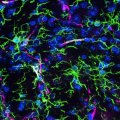The overall health of Moreton Bay in 2006–07 has remained steady compared with last year, according to the latest South East Queensland Healthy Waterways Ecosystem Health Report Card.
University of Queensland Senior Deputy Vice-Chancellor, Professor Paul Greenfield, AO, chairs the South East Queensland Healthy Waterways Partnership’s Scientific Expert Panel responsible for preparing the report each year.
UQ provides scientific support and conducts some of the fieldwork for the report through the Ecosystem Health Monitoring Program (EHMP) – one of the most comprehensive marine, estuarine and freshwater monitoring programs in Australia.
University scientists measure waterway health using a broad range of biological, physical and chemical indicators.
Professor Greenfield has been chair of the scientific expert panel since the launch of the report card scheme in 2001. It grew out of an earlier, $5.2 million Brisbane River and Moreton Bay Wastewater Management Study headed by Professor Greenfield and UQ and hailed as the most comprehensive study ever conducted of local waterways at the time (1997).
The 2007 report card graded 18 catchments and 18 estuaries in South-East Queensland as well as nine zones within Moreton Bay. It involved an analysis of data from 127 freshwater and 254 estuarine and marine sites (381 in total).
It showed an overall improvement in ecosystem health from June 2006 until June 2007, attributing the result to reduced inputs of sediment and nutrients from rivers through lower rainfall and run-off.
Professor Greenfield, UQ’s Vice-Chancellor as of January, 2008, outlined the main findings at today’s (Thursday, October 24) official handover of the report card to Queensland Minister for Sustainability, Climate Change and Innovation, The Honorable Andrew McNamara MP.
The ceremony, held at Kangaroo Point, was addressed by Professor Greenfield, Mr McNamara, as well as Lord Mayor Campbell Newman and Ipswich City Council Deputy Mayor, Cr Victor Attwood.
Key findings of the 2007 report were a grade increase for Southern Moreton Bay from a D+ to a B- however the overall health of the Bay remained much the same as last time (B-) with four of the nine reporting zones receiving a decreased mark and three receiving an increase.
With the adoption of more stringent Queensland Water Quality Guidelines (QWQGs), report card ratings were lower for Coomera, Tallebudgera and Currumbin estuaries however ecosystem health had improved in the Bremer, Brisbane, Logan, Maroochy, and Noosa River estuaries.
The report commends an estimated $500 million spent on upgrades to wastewater treatment plants, reducing nitrogen loads to waterways by approximately 40 percent in the past six years with a further 20–30 percent reduction expected.
However, it urges continued attention to addressing pollution or “diffuse” loads in the catchment through riverbank protection and restoration, good land management practices and management of urban stormwater run-off.
The report again warns of the pressures of increasing population in South-East Queensland – the projected increase from the current population of 2.67 million to four million by 2026 could result in estimated increases of up to 50 percent in point sources and up to 20 percent in diffuse sources of pollution across the region’s waterways.
The 2007 Healthy Waterways Ecosystem Health Report Card can be downloaded at http://www.healthywaterways.org/report_card.html. Media inquiries: Shirley Glaister at UQ Communications (telephone 07 3365 1931, email s.glaister@uq.edu.au), or Anna Walker, at SEQ Healthy Waterways (mobile 0403 255 385).




